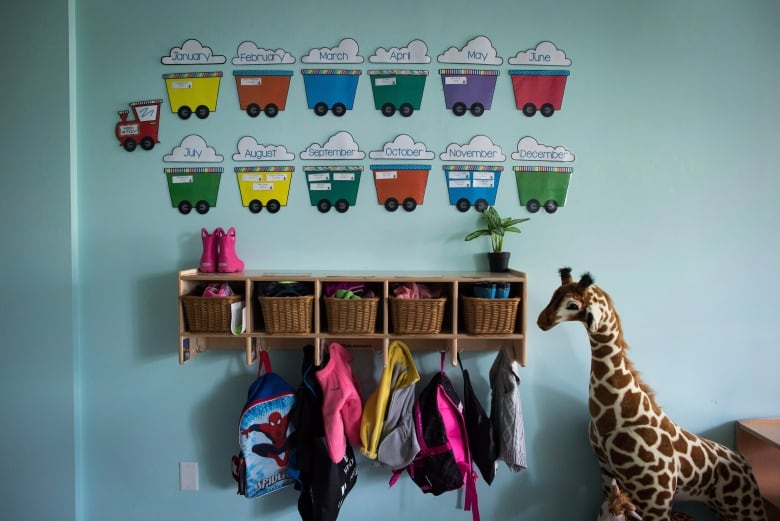Emilia Valente-Salhuana of Sudbury, Ont., quit her job at a career college because she couldn’t afford private daycare, which isn’t subsidized by the Canada-wide Early Learning and Child Care (CWELCC) system.
“We don’t have the funds to pay for a nanny or babysitter and we don’t have family as well to provide care in the area,” said the mother of a 16-month-old son. “So yeah, I had to quit my job.”
Valente-Salhuana’s long wait for a child-care spot isn’t unique. Waitlists across Ontario have risen dramatically since the province signed on to the national $10-a-day program.
Valente-Salhuana’s son has been on the city’s child care registry since January 2023. She’s expecting her second child in about a month.
The city says the average wait time for a daycare spot in Sudbury is now 23 months.
Valente-Salhuana said if she could get a spot in a licensed daycare, it would allow her to return to work.
“Right now we are struggling a little bit financially,” she said.
“My husband does have a relatively good-paying job, but it’s not enough. I need to get back into the workforce, whether it be 32 to 40 hours a week, just for us to kind of balance out a little better. It would make things easier.”
Valente-Salhuana said she loved her work as a financial aid administrator at the private college.
“It was a pretty good-paying job.”

To get a spot in one of the city’s 75 licensed daycares, parents or caregivers have to register with the city’s child-care registry.
“That online platform is monitored by children’s services on a regular basis,” said Miranda Mackie, manager of children’s services for the City of Greater Sudbury.
“It allows us to capture real-time data about how many families we have waiting for care and in what age grouping as well.”
Mackie recommends that parents get on the list as soon as they can, long before a child is born.
As of December, she said, 4,029 children were on the waitlist.

Jennifer Seaward said her seven-year-old son has been on the waitlist since 2019 and her two-year-old daughter has been on it since January 2022.
Seaward’s partner works full time; she’s a student at Laurentian University. While they wait for spots to become available, they are paying for private home daycare.
“It’s not able to be covered by the subsidy because it’s a private daycare,” she said.
“So I’m having to pay out of pocket $50 a day. That’s $500 every two weeks, $1,000 a month. It’s financially, a struggle”
Right now, she said, it’s a struggle to cover basic expenses because of the high cost of daycare.
‘Workforce in crisis’
Tracy Saarikoski is executive director of Discovery Early Learning and Care, which runs four child-care centres in Sudbury and serves around 450 children each day.
Saarikoski said the sector faces a labour shortage that has led to long waitlists for a child-care spot because centres like the ones she manages don’t have enough staff.
“The workforce is in a crisis right now,” she said.
“I work with the Ontario Coalition for Better Childcare and it’s across the province, this workforce shortage. It’s because of low wages, no benefits, no pension plans.”
Saarikoski said Ontario has fallen behind other provinces such as Manitoba, British Columbia, Nova Scotia and Prince Edward Island that have invested more in child care since joining the federal CWELCC system.
In January, Ontario increased the starting wage for registered early childhood educators by 19 per cent, from $20 an hour to $23.86 per hour. Registered early childhood education program staff who make under $26 an hour are also eligible for annual wage increases of $1 per hour.
But Saarikoski said early childhood educators in daycares often make less than colleagues at school boards. While her workers have a benefits package, she added, they don’t have access to a pension, as is the case in school boards.
“We hate that they’re walking the floor and going across the hall,” she said, referring to educators who transfer to school boards to work in kindergarten classrooms or with younger children.
If she had funding to pay better wages and add employees to a pension plan, Saarikoski said, that would have the biggest impact on reducing the city’s waitlist.
“Absolutely everybody deserves a spot and all families deserve access.”
Education Minister Stephen Lecce acknowledged recently that the national child-care plan would undoubtedly mean increased demand, but Ontario is working to increase the number of spaces.
“We have a plan to increase spaces across the board, 86,000, and obviously the government is committed to keep building spaces well in excess to meet the demand of the families in the province.”



